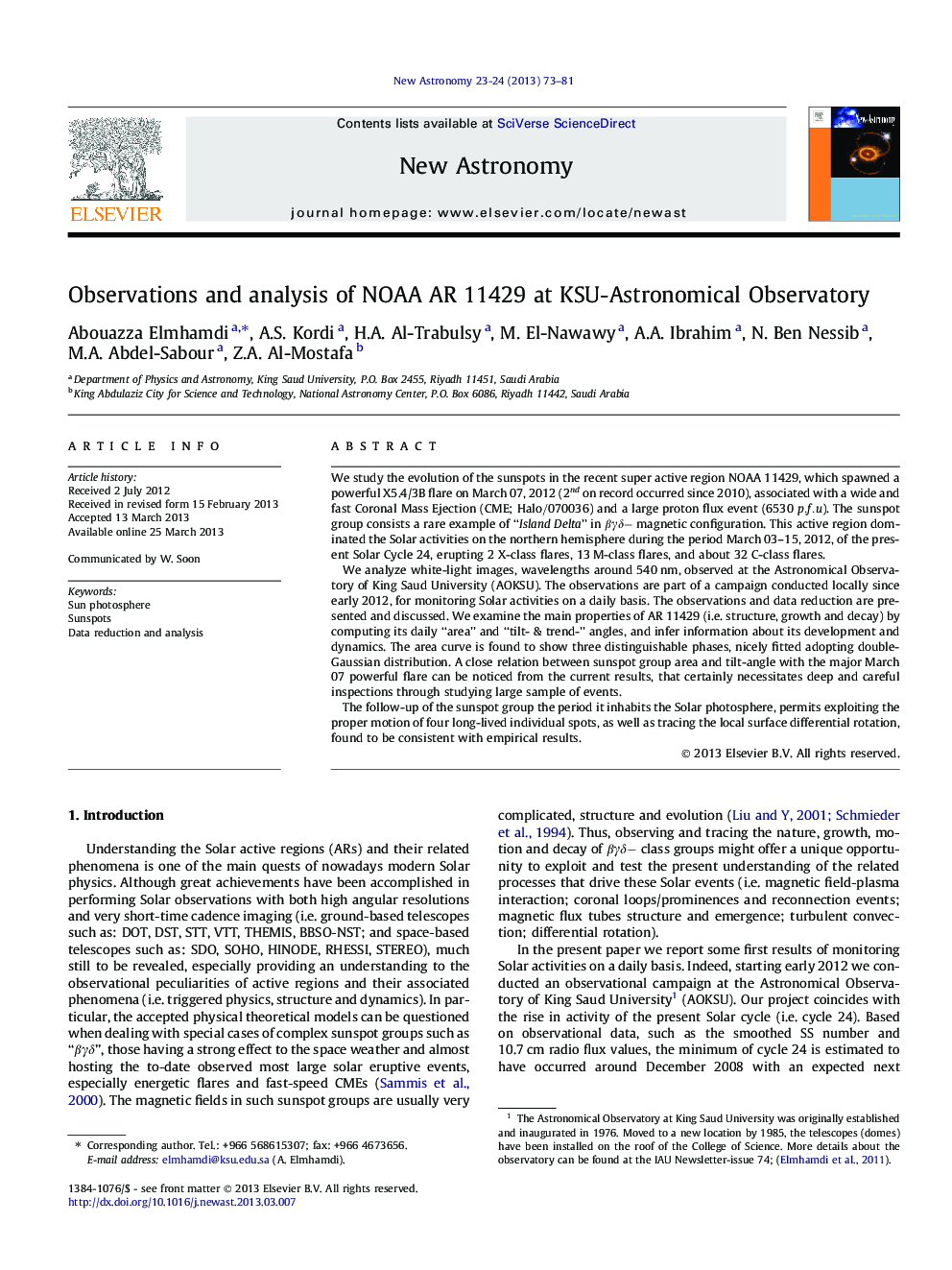| Article ID | Journal | Published Year | Pages | File Type |
|---|---|---|---|---|
| 1779082 | New Astronomy | 2013 | 9 Pages |
We study the evolution of the sunspots in the recent super active region NOAA 11429, which spawned a powerful X5.4/3B flare on March 07, 2012 (2nd on record occurred since 2010), associated with a wide and fast Coronal Mass Ejection (CME; Halo/070036/070036) and a large proton flux event (6530 p.f.up.f.u). The sunspot group consists a rare example of “Island Delta ” in βγδ-βγδ- magnetic configuration. This active region dominated the Solar activities on the northern hemisphere during the period March 03–15, 2012, of the present Solar Cycle 24, erupting 2 X-class flares, 13 M-class flares, and about 32 C-class flares.We analyze white-light images, wavelengths around 540 nm, observed at the Astronomical Observatory of King Saud University (AOKSU). The observations are part of a campaign conducted locally since early 2012, for monitoring Solar activities on a daily basis. The observations and data reduction are presented and discussed. We examine the main properties of AR 11429 (i.e. structure, growth and decay) by computing its daily “area” and “tilt- & trend-” angles, and infer information about its development and dynamics. The area curve is found to show three distinguishable phases, nicely fitted adopting double-Gaussian distribution. A close relation between sunspot group area and tilt-angle with the major March 07 powerful flare can be noticed from the current results, that certainly necessitates deep and careful inspections through studying large sample of events.The follow-up of the sunspot group the period it inhabits the Solar photosphere, permits exploiting the proper motion of four long-lived individual spots, as well as tracing the local surface differential rotation, found to be consistent with empirical results.
